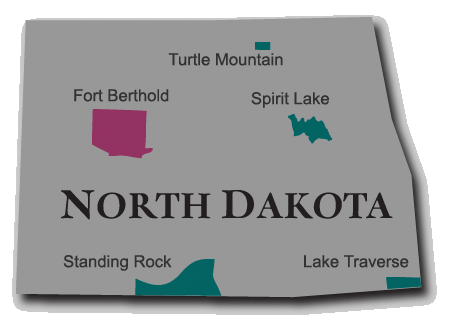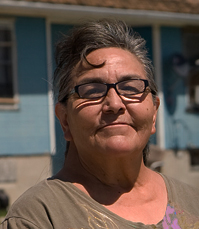|
|

 |
About the Arikara, Hidatsa, and Mandan: Now known as the Three Affiliated Tribes, these groups did not live together until the mid-1800s. The agricultural Arikara separated from the Skidi Pawnee in Nebraska in the early 17th century and moved north along the Missouri River. The Arikara arrived in the Dakotas in the late 18th century.
The Hidatsa, originally part of the Crow people, were probably the first Siouan people to leave the Ohio Valley. The Hidatsa farmed and hunted buffalo around Lake Winnepeg. They later moved north toward the upper Missouri River, where they continued to farm and hunt. In the late 17th century the Crow moved further west, leaving the Hidatsa behind.
The Mandans, another Siouan people, made their way to the upper Missouri River from the Ohio Valley earlier than other tribes. They not only farmed and hunted buffalo but also became intermediaries between the French and other Indian tribes.
A smallpox epidemic in 1837 devastated these three tribes, bringing them close to extinction. Surviving Hidatsa and Mandan united in 1845 in the town of Like-a-Fishhook. The Arikara joined the Hidatsa and Mandan in 1862.
History of the Reservation: The Treaty of Fort Laramie of 1851 recognized native holdings exceeding 12 million acres, yet the Reservation created in 1870 only held 8 million acres. By the 1880s, the allotment system of private land ownership reduced the size of the Fort Berthold Reservation to about 1 million acres. In 1910, the U.S. government confiscated a large section of land from the Reservation. The 1950s saw yet another reduction in the Reservation’s size when the United States built the Garrison Dam, creating the 152,300 acre Lake Sakakawea.
Life on the Reservation: The Garrison Dam’s creation destroyed the Three Affiliated Tribes’ economic base. Lake Sakakawea inundated much of the Tribes’ land, farms, and homes, and the Tribe’s only compensated was $12 million for land valued at $20 million. The new lake forced families who had previously supported themselves on farming and ranching to abandon the fertile river bottom and move to the drier uplands. The remaining land only supports limited farming and ranching. Out of 5,387 residents, 1,059 are of working age. Limited jobs in tribal and federal governments keep the unemployment rate at 26.5 percent leaving approximately 750 workers to support all 5,387 tribal residents. How can I help?
Fort Berthold on the map: Dunn, McLean, McKenzie, Mountrail, Ward, and Mercer counties, North Dakota.
Tribal enrollment: 8,500 enrolled members, 5,387 residents.  |
|
|















